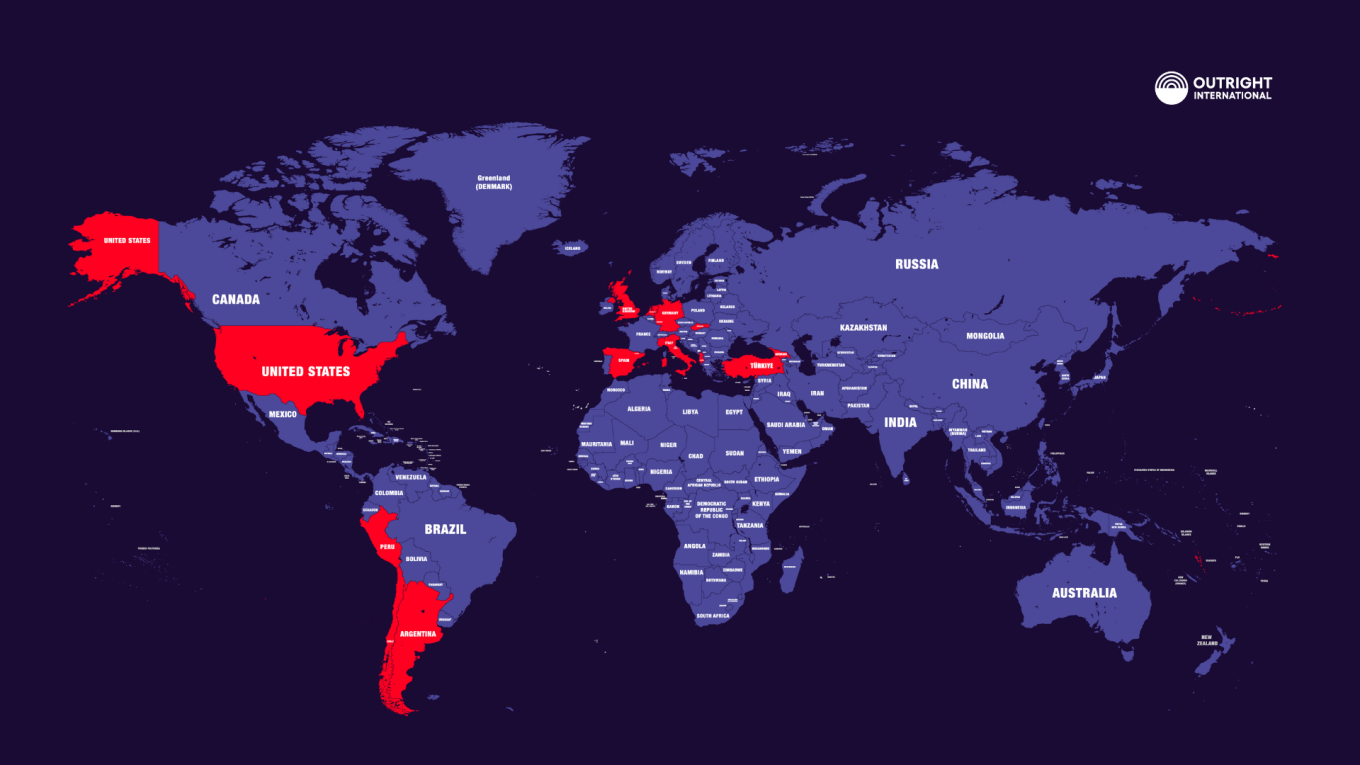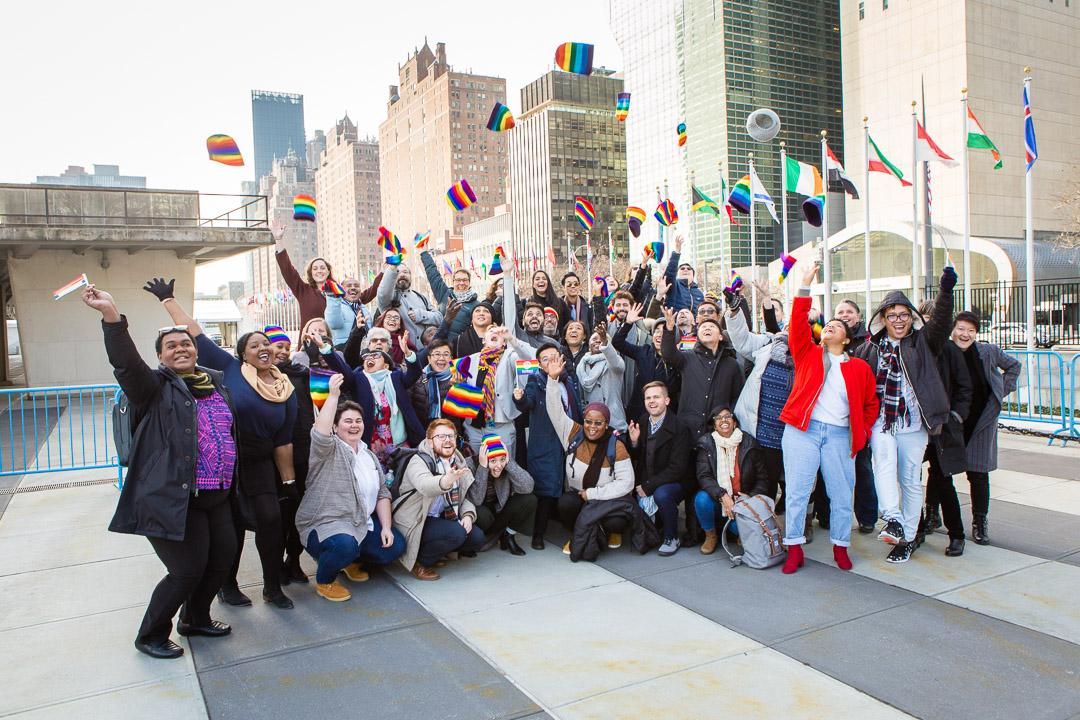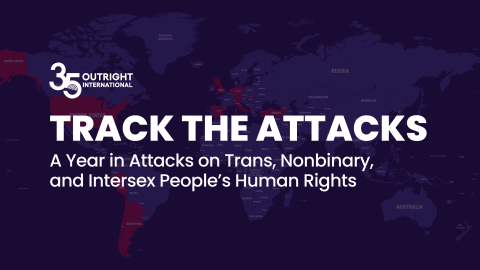
Report
A Year in Attacks on Trans, Nonbinary, and Intersex People’s Human Rights
Region(s)
Author(s)
Publish Date
November 20, 2025
Share
The year 2025 has seen an escalation of attacks on the human rights of trans, nonbinary, and intersex people worldwide. The 2024 election of Donald Trump as President of the United States and his early executive actions gave unprecedented momentum to a rollback across multiple regions. From his first day in office, Trump used the power of the executive branch to deny the existence of both sex and gender diversity, reinstate discriminatory policies, and legitimize rhetoric rooted in rigid biological binaries.
By placing the weight of federal power behind rigid binary definitions of sex, the Trump administration gave renewed legitimacy to anti-gender narratives worldwide. Political leaders in other countries quickly seized the momentum, using similar language to justify restrictive laws, constitutional amendments, and policy reversals targeting gender diversity.
Anti-gender narratives are ideological frameworks that reject the idea of gender as a social and cultural construct. They deny the existence of gender diversity and depict movements for gender equality, bodily autonomy, and LGBTIQ people’s rights as threats to “traditional values,” national identity, or the social order. Originating in opposition to advances in women’s and LGBTIQ people’s rights, these narratives have evolved into a global strategy used by political and religious actors to mobilize resistance against equality, influence public opinion, and justify restrictive laws and policies.
Interested in diving deeper into the data? Take a look at our interactive map with the full country descriptions.
A Global Look at Comprehensive Anti-Gender Attacks on Human Rights
This report documents, in chronological order and country by country, the laws, decrees, and political proposals introduced or adopted in 2025 that target trans, nonbinary, and intersex people, and the political context surrounding them. These attacks tend to fall in the following categories:
- restrictions on gender-affirming health care
- legal codification of sex and gender binaries
- restrictions on legal gender recognition
- censorship and restrictions on expression, education, and visibility
- discrimination and exclusion in employment, public service, and access to facilities.
In several cases, affirming health care bans include exceptions that expressly allow non-consensual medical interventions on intersex children, exposing the inconsistency of measures that claim to “protect minors” while denying bodily autonomy to some of them.
- Restrictions on gender-affirming health care. This refers to laws and policies that ban or criminalize medical treatments essential for some trans people’s well-being, or that impose barriers so extensive—such as age limits, psychiatric evaluations, or complex authorization procedures—that access becomes practically impossible. These measures not only deny the right to health and bodily autonomy but also stigmatize trans identities as pathological.
- Legal codification of sex and gender binaries. This category captures constitutional and statutory reforms that define sex strictly as male or female, erasing recognition of gender diversity and intersex status from the law. By embedding these binary definitions into constitutions, civil codes, and equality frameworks, governments make future recognition and protection of gender-diverse people more difficult to achieve.
- Restrictions on legal gender recognition. Restrictions involve policies and court decisions that prohibit, delay, or complicate changes to legal gender markers. These measures often reintroduce medical or judicial gatekeeping and undermine self-determination, forcing trans and intersex people back into systems of control over their own identity.
- Censorship and restrictions on expression, education, and visibility. This category encompasses laws and policies that suppress discussion of gender diversity in schools, media, and public life, or that penalize those who show support for trans and nonbinary people. These measures seek to silence gender-diverse voices, erase them from public discourse, and delegitimize advocacy and solidarity efforts.
- Discrimination and exclusion in employment, public service, and access to facilities. This refers to laws and policies that exclude trans and gender-diverse people from workplaces, the military, sports, or public spaces. By reinstating sex-based restrictions and rescinding anti-discrimination protections, these measures reinforce systemic inequality and reduce participation in public life.
How the Countries Fared in 2025

Map of A Year in Attacks
Argentina, Chile, Italy, Perú, Türkiye, and the United States.
Albania, Georgia, Hungary, Slovakia, United States, Vanuatu.
Argentina, Germany, Netherlands, Spain, Türkiye, United Kingdom. (Preexisting since 2020 in Hungary.)
Chile, Hungary, Peru, Türkiye.
Argentina, Guam, Peru, United States.
A Path Forward After Attacks
Rather than offering a hopeful conclusion, this report underscores the urgency of recognizing the scale and severity of the backlash. The measures documented here are not isolated events but part of a broader trend seeking to roll back decades of progress on gender equality and human rights. Understanding these developments is a necessary first step toward mobilizing effective responses, strengthening alliances, and preventing the further erosion of protections for trans, nonbinary, and intersex people.

Explore News and Commentaries
We share news, cultural media and advocacy of partners, activists and experts through the lens of LGBTIQ people working on international human rights.
Read Our Insights